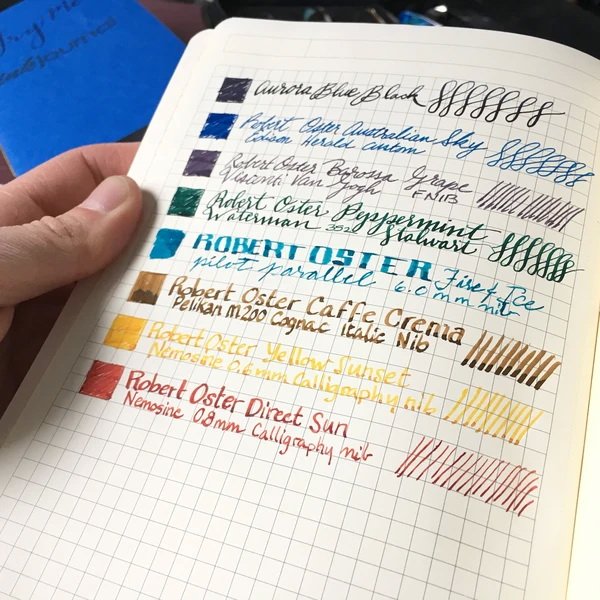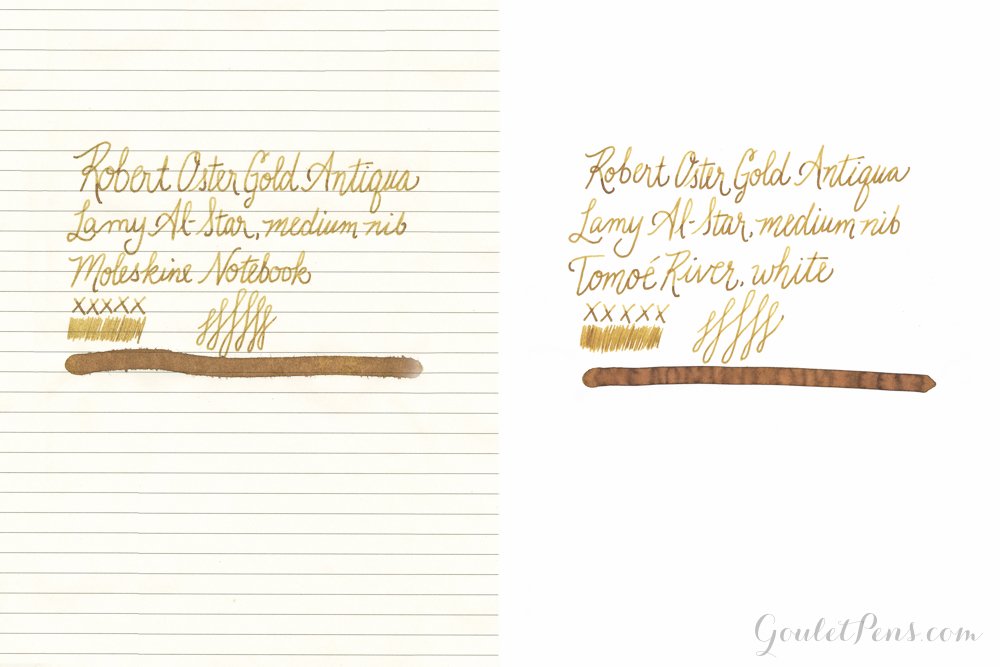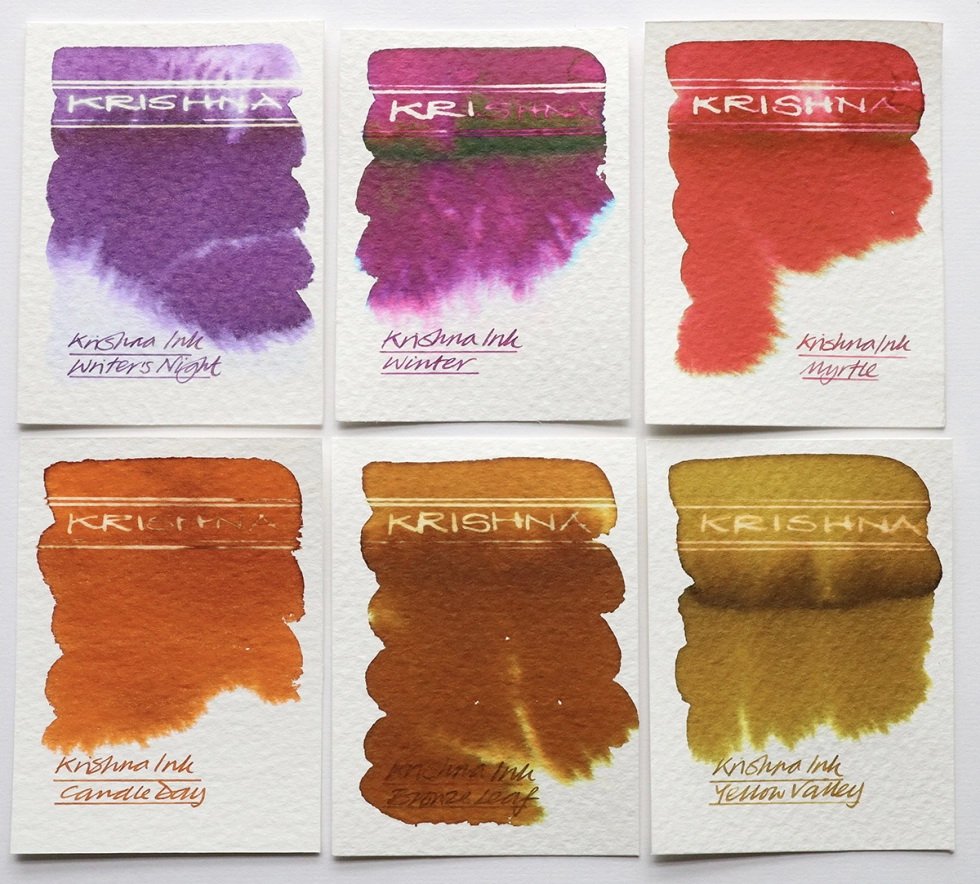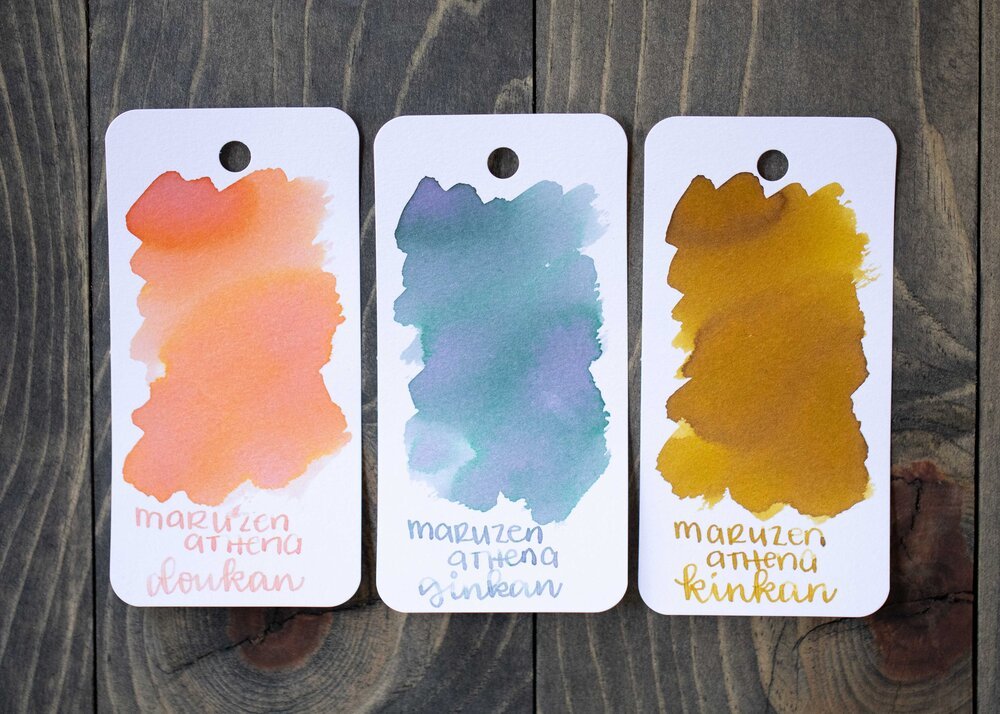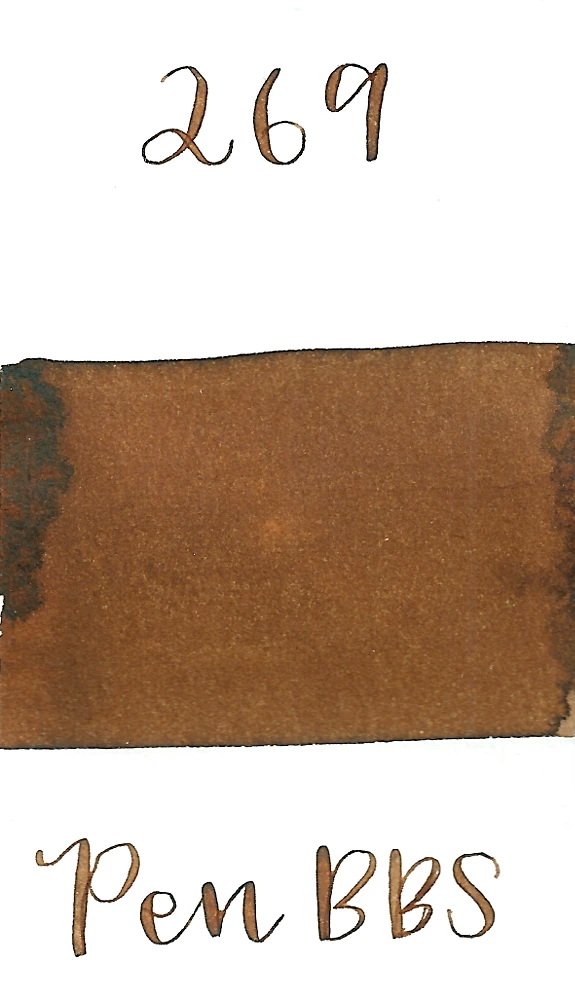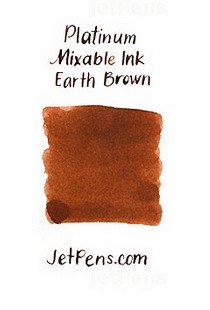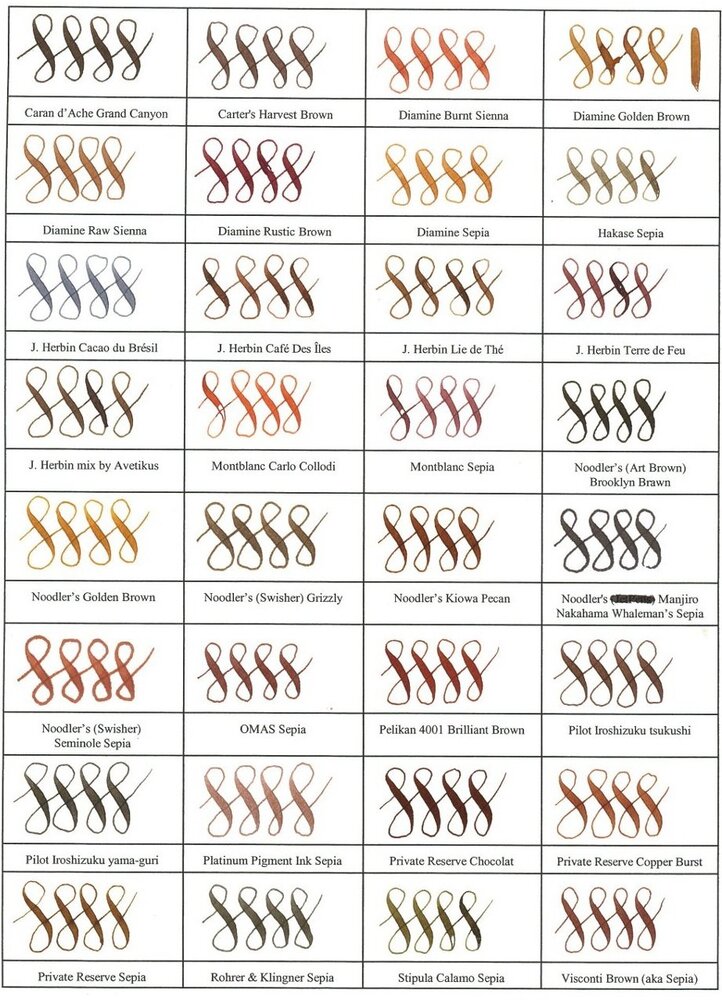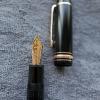Search the Community
Showing results for tags 'lartisan pastellier'.
-
It took me some time to finish this comparison but here it is. Not flawless, not pefect, but it has plenty of colors to see. To be honest I've never been violet fan. I always liked dark purples but disliked most of violets. It's hanged with time. At the moment I'm quite keen on these hues....
- 54 replies
-
- akkermandiamine
- montblanc
- (and 7 more)
-
L'Artisan Pastellier is french ink / calligraphy materials producers. They offer two lines of inks suitable for fountain pens: CALLIFOLIO (inks made for fountain pens, neutral PH and so on) andENCRES CLASSIQUES (not all of them may have perfect properties however I've tried most of them and had no i...
-

Ink Shoot-Out : Rohrer&Klingner Verdigris vs Callifolio Equinoxe(6)
namrehsnoom posted a topic in Ink Comparisons
Ink Shoot-Out : Rohrer & Klingner Verdigris vs L’Artisan Pastellier Callifolio Equinoxe(6) A couple of months ago, I did a review of R&K Verdigris, and was pleasantly surprised by the ink’s colour and performance – it’s truly a classic. When looking at related inks, I noticed that L’Arti...- 9 replies
-
- ink shoot-out
- rohrer&klingner
- (and 5 more)
-
L'Artisan Pastellier Callifolio - Bleu Ultramarine L'Artisan Pastellier is a small company in southern France that specialises in natural pigments, and offers customers authentic and reliable products in beautiful colours based on mineral or vegetable pigments. In a collaboration with Loic Raino...
- 5 replies
-
- lartisan pastellier
- callifolio
-
(and 2 more)
Tagged with:
-
This collection has been made in an intensive attempt to find the most ideal and complete shades of brown color fountain pen inks over the internet and as long as writing with a medium size fountain pen is what I'm concerned of, the "infinity symbol" on a regular paper is the thing I've considered s...
- 4 replies
-
- private reserve
- kwz
- (and 8 more)
-
Three 'taupe' (grey brown) fountain pen inks, two French, one German: J. Herbin La Perle des Encres Cacao du Bresil L'Artisan Pastellier Classique Brun Ours Rohrer & Klingner Schreibtinte Sepia These three colors are very close. Two of them are nearly indistinguishab...
- 21 replies
-
- taupe
- grey brown
-
(and 5 more)
Tagged with:
-
InkShift – L'Artisan Pastellier Callifolio Heure Dorée to Noir With their Callifolio line of inks, L'Artisan Pastellier has produced some really nice ink colours. Some of them are better than others, though. I really like Heure Dorée as a drawing ink, and it is undoubtedly a beautiful ink for jo...
- 5 replies
-
- inkshift
- lartisan pastellier
-
(and 3 more)
Tagged with:
-
L'Artisan Pastellier Callifolio - Bosphore L'Artisan Pastellier is a small company in southern France that specialises in natural pigments, and offers customers authentic and reliable products in beautiful colours based on mineral or vegetable pigments. In a collaboration with Loic Rainouard...
- 13 replies
-
- lartisan pastellier
- callifolio
-
(and 2 more)
Tagged with:
-
L'Artisan Pastellier is french ink / calligraphy materials producers. They offer two lines of inks suitable for fountain pens: CALLIFOLIO (inks made for fountain pens, neutral PH and so on) and ENCRES CLASSIQUES (not all of them may have perfect properties however I've tried most of them and had no...
-
Hello everybody! It's my first time in this subforum, so please alert me if I'm doing something wrong. I have somehow accumulated over 20 different bottles of ink and 50 samples in the past two years. Love the variety, but some of these bottles don't get much use, and the ink in them just ages on...
- 12 replies
-
- de atramentis
- diamine
- (and 7 more)
-
L'Artisan Pastellier Callifolio - Téodora L’Artisan Pastellier is a small company in southern France that specialises in natural pigments, and offers customers authentic and reliable products in beautiful colours based on mineral or vegetable pigments. In a collaboration with Loic Rainouard fro...
- 8 replies
-
- lartisan pastellier
- callifolio
-
(and 2 more)
Tagged with:
-
L'Artisan Pastellier Callifolio - Olifants L’Artisan Pastellier is a small company in southern France that specialises in natural pigments, and offers customers authentic and reliable products in beautiful colours based on mineral or vegetable pigments. In a collaboration with Loic Rainouard fr...
- 11 replies
-
- lartisan pastellier
- olifants
-
(and 2 more)
Tagged with:
-
L'Artisan Pastellier is french ink / calligraphy materials producers. They offer two lines of inks suitable for fountain pens: CALLIFOLIO (inks made for fountain pens, neutral PH and so on) andENCRES CLASSIQUES (not all of them may have perfect properties however I've tried most of them and had no i...
-
L'Artisan Pastellier Callifolio - Sepia L'Artisan Pastellier is a small company in southern France that specialises in natural pigments, and offers customers authentic and reliable products in beautiful colours based on mineral or vegetable pigments. In a collaboration with Loic Rainouard from...
- 4 replies
-
- lartisan pastellier
- callifolio
-
(and 2 more)
Tagged with:
-
L'Artisan Pastellier Callifolio - Gris de Payne L’Artisan Pastellier is a small company in southern France that specialises in natural pigments, and offers customers authentic and reliable products in beautiful colours based on mineral or vegetable pigments. In a collaboration with Loic Rainouar...
- 12 replies
-
- lartisan pastellier
- callifolio
-
(and 2 more)
Tagged with:
-
L'Artisan Pastellier Callifolio - Baikal L’Artisan Pastellier is a small company in southern France that specialises in natural pigments, and offers customers authentic and reliable products in beautiful colours based on mineral or vegetable pigments. In a collaboration with Loic Rainouard from...
- 13 replies
-
- lartisan pastellier
- callifolio
-
(and 2 more)
Tagged with:
-
L'Artisan Pastellier Callifolio - Bleu Méditerranée L'Artisan Pastellier is a small company in southern France that specialises in natural pigments, and offers customers authentic and reliable products in beautiful colours based on mineral or vegetable pigments. In a collaboration with Loic Rai...
- 6 replies
-
- lartisan pastellier
- callifolio
-
(and 3 more)
Tagged with:
-
Pelikan Trio ~ In December, 2018 a two-part plan for ordering paper, inks, etuis, and Pelikan fountain pens gradually came together. The underlying idea was to place a smaller test order with Fritz Schimpf stationery in Tübingen, Germany, before following up with a larger order. Circumstance...
- 16 replies
-
- pelikan
- fritz schimpf
-
(and 1 more)
Tagged with:
-
L'Artisan Pastellier Callifolio - Equinoxe(5) L’Artisan Pastellier is a small company in southern France that specialises in natural pigments, and offers customers authentic and reliable products in beautiful colours based on mineral or vegetable pigments. In a collaboration with Loic Rainouard...
- 7 replies
-
- lartisan pastellier
- callifolio
-
(and 2 more)
Tagged with:
-
L'Artisan Pastellier Callifolio - Yalumba L'Artisan Pastellier is a small company in southern France that specialises in natural pigments, and offers customers authentic and reliable products in beautiful colours based on mineral or vegetable pigments. In a collaboration with Loic Rainouard f...
- 5 replies
-
- lartisan pastellier
- callifolio
-
(and 2 more)
Tagged with:
-
So I really didn't want yo get into mixing inks, it took me a while to match the right pen to each of my 29 inks and I didn't want even more complications, but... Seeing Équinoxe 6 was depleting I got a 50ml pouch only to find it doesn't look like what I liked, which has been widely reported: perhap...
- 1 reply
-
- équinoxe 6
- skrip blue
-
(and 3 more)
Tagged with:
-

Callifolio Line (36 Inks) - L'artisan Pastellier
visvamitra posted a topic in Th-INKing Outside the Bottle
L'Artisan Pastellier is french ink / calligraphy materials producers. They offer two lines of inks suitable for fountain pens: CALLIFOLIO (inks made for fountain pens, neutral PH and so on) and ENCRES CLASSIQUES (not all of them may have perfect properties however I've tried most of them and had no... -
L'Artisan Pastellier Callifolio - Cassis L’Artisan Pastellier is a small company in southern France that specialises in natural pigments, and offers customers authentic and reliable products in beautiful colours based on mineral or vegetable pigments. In a collaboration with Loic Rainouard from...
- 10 replies
-
- lartisan pastellier
- callifolio
-
(and 2 more)
Tagged with:
-
L'Artisan Pastellier Callifolio - Bleu Azur L'Artisan Pastellier is a small company in southern France that specialises in natural pigments, and offers customers authentic and reliable products in beautiful colours based on mineral or vegetable pigments. In a collaboration with Loic Rainouard...
- 9 replies
-
- lartisan pastellier
- callifolio
-
(and 3 more)
Tagged with:
-
L'Artisan Pastellier Callifolio - Bordeaux L'Artisan Pastellier is a small company in southern France that specialises in natural pigments, and offers customers authentic and reliable products in beautiful colours based on mineral or vegetable pigments. In a collaboration with Loic Rainouard...
- 14 replies
-
- lartisan pastellier
- callifolio
-
(and 2 more)
Tagged with:



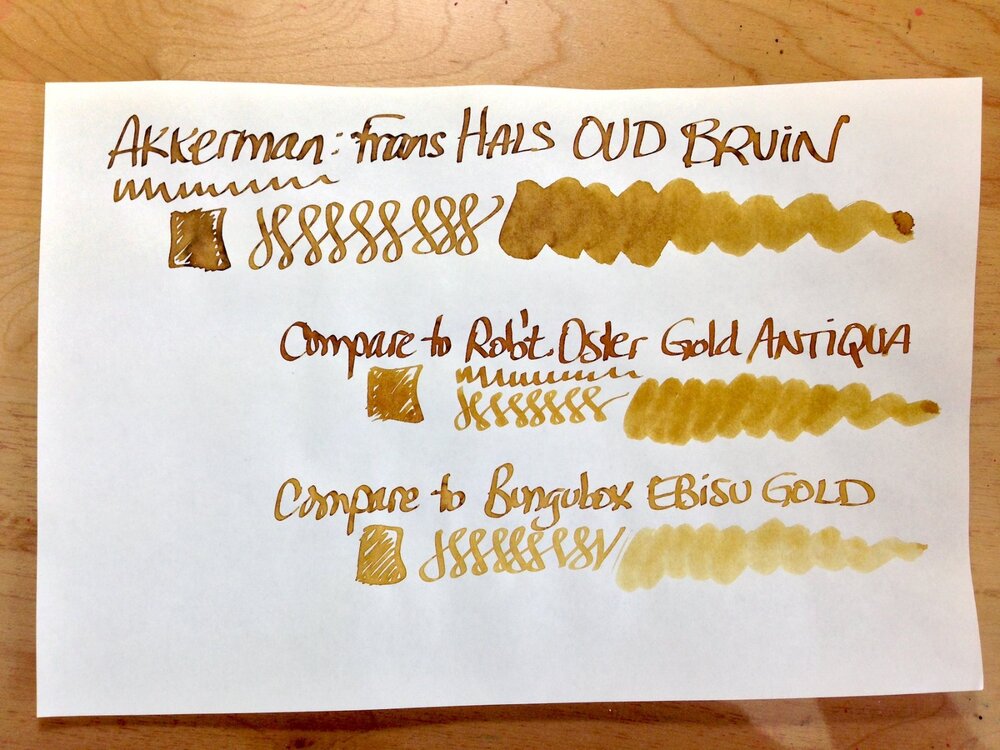

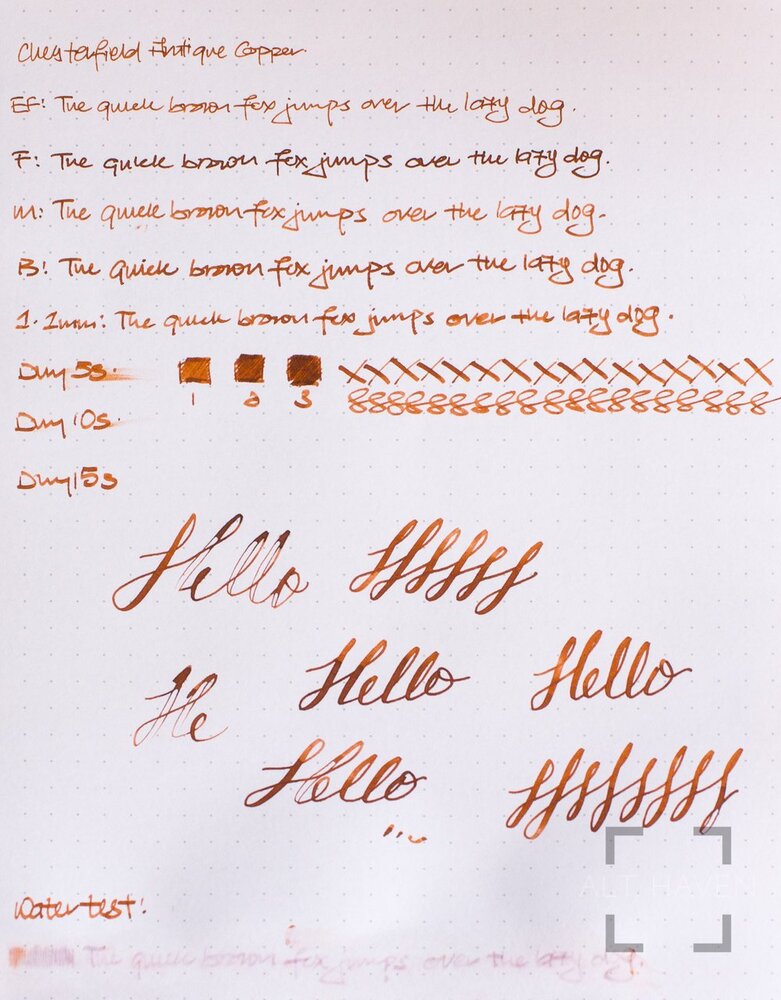



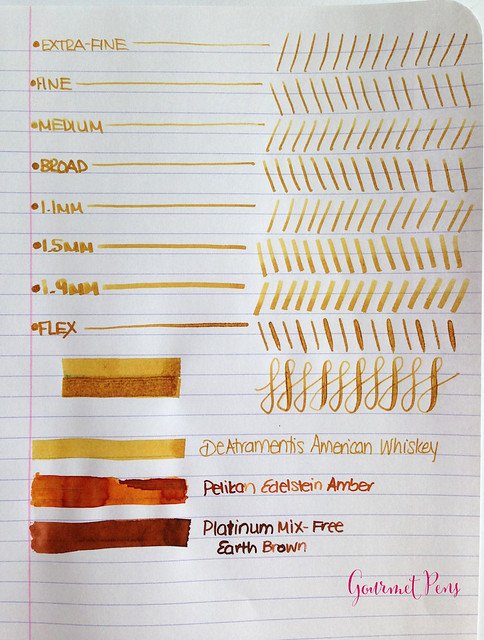





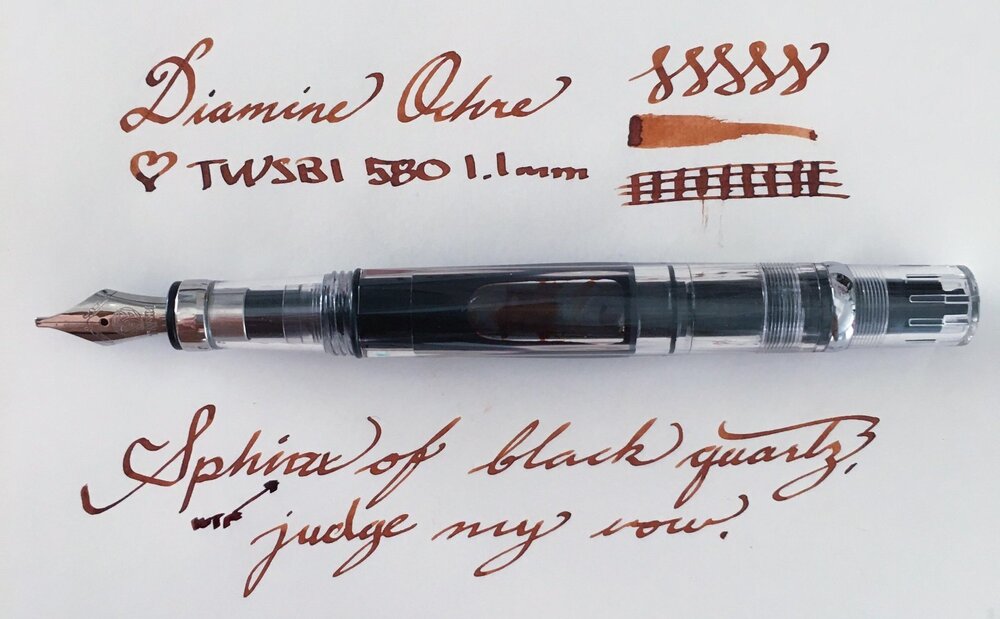







.thumb.jpg.d05b6f268f070b332881eb2dc538b0e5.jpg)









